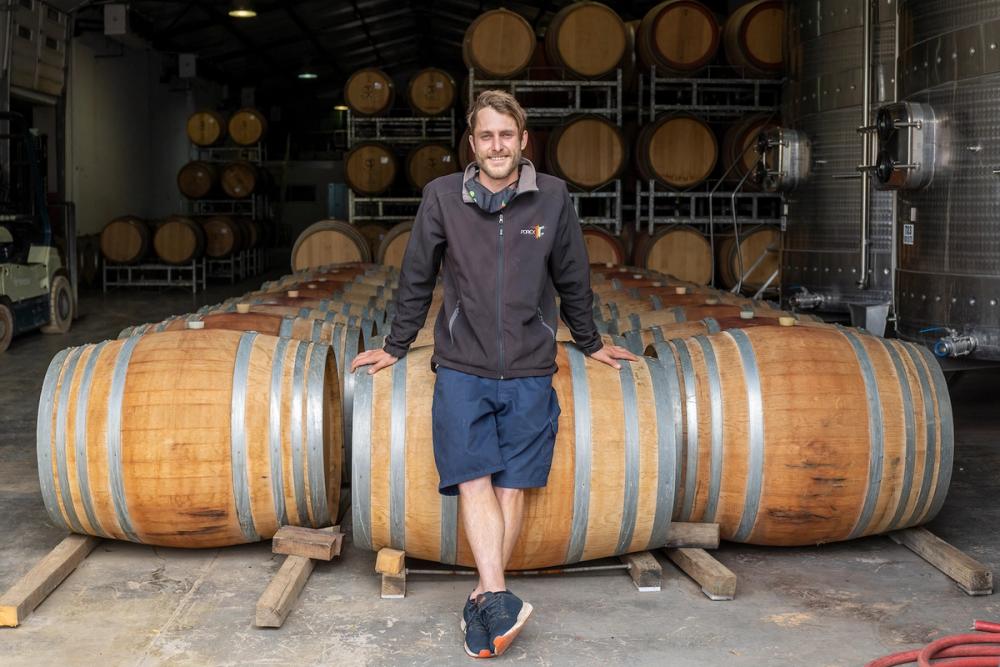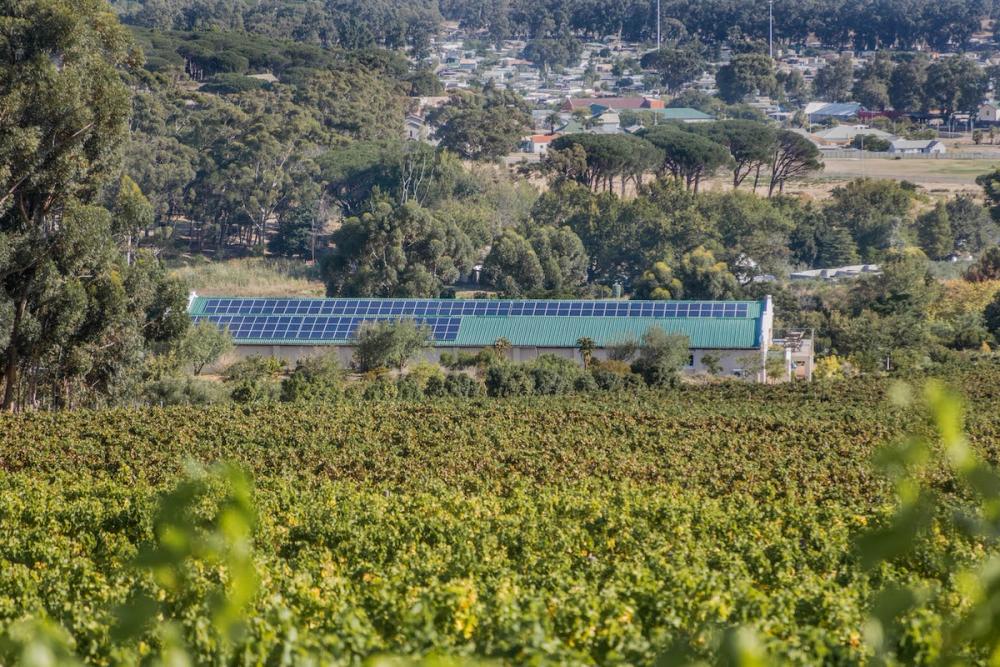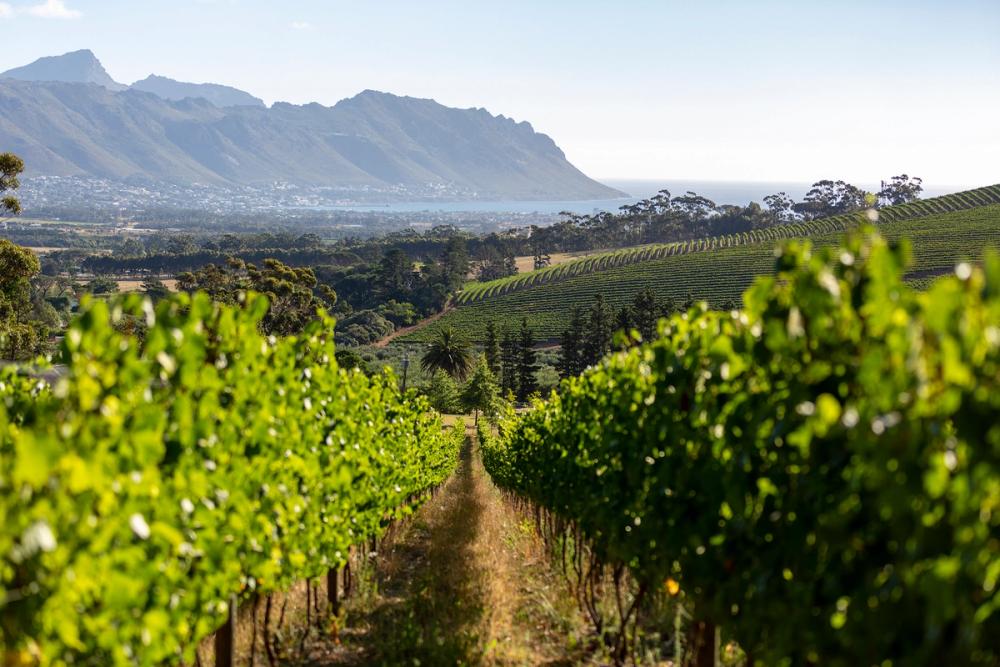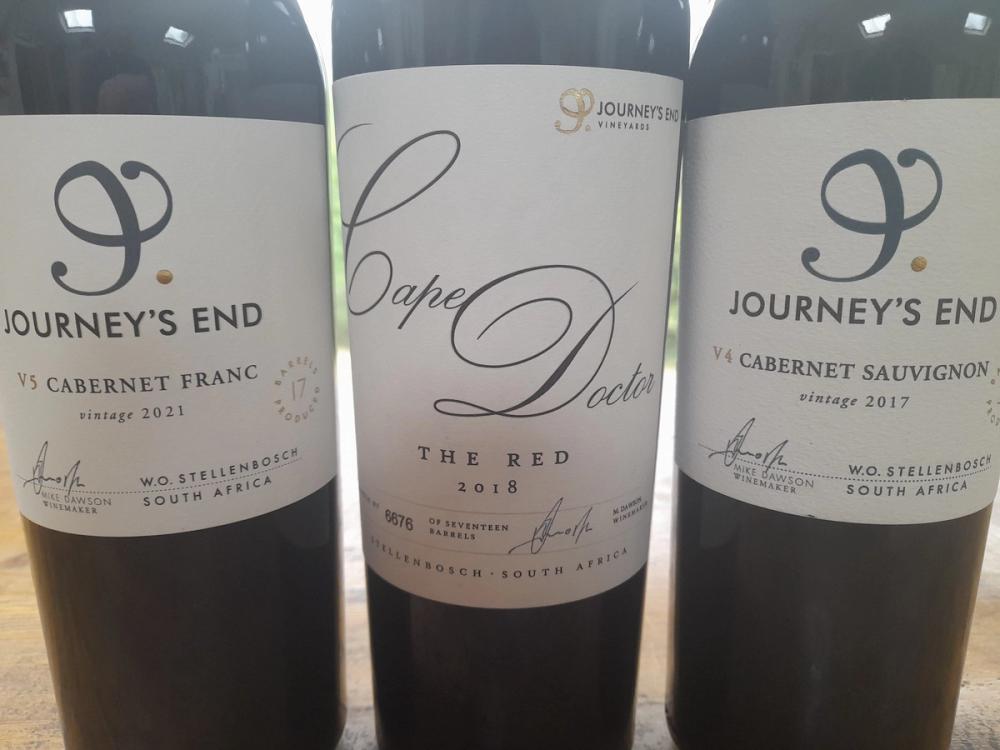“That’s part of the ethos of Journey’s End – to have a lot of fun while you’re working here but to look after the community as well as agricultural sustainability,” says Dawson.

“Forward thinking”: Journey’s End winemaker Mike Dawson
When it comes to sustainability, few western Cape wineries embrace the concept more keenly than Journey’s End. The Somerset West producer, a founding member of the Sustainable Wine Roundtable, a global coalition of the value chain developing a sustainability reference standard, has just completed infrastructure investment that enables the cellar to operate under full solar power. With power outages, or ‘load-shedding’ as it is known in South Africa, becoming worse every year, it is a huge relief for the winery’s talented winemaker Mike Dawson and his team.
“The whole cellar’s become solar powered,” Dawson revealed. “We were using solar panels, but they’re no good at night and we’ve now installed a whole new inverter system. Load-shedding has become completely ridiculous, and we’ve also had some very windy conditions which blew down a lot of the power lines. So the solar installation has really been a godsend for us. We’ve revamped our cooling system, using more energy-efficient and lower carbon print refrigeration for tank cooling and cellar air conditioning.
“So we’re trying to go off grid as far as humanly possible. Otherwise, power outages are going to become a real issue. We do have a backup generator, but the cost of fuel is ridiculous. We were the second winery to install solar power, back in 2012, when we started the process. It was good forward thinking by the Gabb family [the British owners]. The whole cellar’s now under LED lights – they last 20 times longer.”

Solar panels were installed in 2012: the second winery on the Cape to do so
Part of the winery’s sustainability drive is both to reduce waste and nullify its impact.
“All waste is getting recycled or put back on the vineyard,” continued Dawson, who visited England in mid-summer to promote his wines and visit its distributors, Bibendum. The UK is comfortably the number one market for Journey’s End, which exports 95% of production to Europe, Asia and North America.
“We’re trying to reduce the amount of waste by using flotation wine-settling rather than cold settling. We sparge juice with nitrogen gas which floats all your sediment to the top of the tank. It’s more effective between 16-18°C, so that’s reduced carbon footprint and produces 10% better juice-recovery in our whites. That’s cut our waste in terms of lees and sediment by 10% at least. All waste is getting put back on vineyards or recycled, so we’re really trying to do everything as sustainably as possible. That’s part of the ethos of Journey’s End – to have a lot of fun while you’re working here but to look after the community as well as agricultural sustainability.”

All waste is getting put back on vineyards or recycled
The estate’s laudable community care involves providing over 20,000 meals per week for several thousand members of the local population in the Helderberg.
“We started this in 2020 during Covid when we did 1.2 million meals in the first year back,” Dawson added, “and we’re now quite close to four million meals. It’s two meals a day per person for three days a week. You’ve got to look after your people. We’ve also established a ‘Beat the Bully’ foundation, which protects pupils from gangsterism and bullying at school.”
The Journey’s End wines

SBS blend 2022 87% Sauvignon Blanc, 13% Semillon
The new blend will not be commercially available until November. Expected to retail at around £25, it is as yet unnamed, but a super-premium white for which Dawson has high hopes. Fermented and matured for 12 months in a 2,000-litre cylindrical egg-shaped foudre made by Vicard, the fruit comes from a 280m block, just below the manor house. “We already produce two Sauvignon Blancs, and wanted to make a blend with minimal intervention,” Dawson explained. “Everyone who’s tasted it in the UK loved it. It’s from beautiful quality grapes on decomposed granite derivative soil, and we want to keep production of it quite light as it’s a very special wine. The vessel is quite a sight to behold.” Known as an ‘Ovonum’, it encourages natural circulation of yeasts and gives the wine a strong textural element.
Destination Chardonnay 2021
100% barrel-fermented with wild yeasts, this is the top Journey’s End Chardonnay. Spending 10 months in 15% new French oak (medium toast) and 85% second fill, it is quite Meursault in style, having seen 15% partial malolactic fermentation. More stonefruit than citrus, with apricot and peach notes. With a creamy texture from lees stirring, it is an ideal food wine.
V1 Chardonnay 2021
Single vineyard, with elevage in 80% oak (of which 10% is new), 10% in concrete eggs and 10% in claypots. Lovely aromatic freshness, with zesty limey notes as well as mineral salinity and a granite edge, which are, Dawson says, ‘quite synonymous with our Chardonnays.’
V5 Cabernet Franc 2021
Cool climate, coastal fruit that was formerly used for blending only but now makes a superb single varietal expression. Delightful ripe cherry notes, with hints of olive, fynbos and cinnamon spice, as well as soft but lengthy tannins, make this a seductive wine. Freshness from low pH of 3.4, and abv of 14%, ensure excellent balance.
The Griffin Syrah 2018
Top quality Syrah from a stunning vintage. Unusual in that it went through completely carbonic fermentation. Fruit picked at around 10am, and left in the sun till late afternoon. Carbon dioxide applied over it with the tank closed off and left for 15 days. Elevage for 18 months in 60% new American oak, and 40% second fill (a combination of French and American oak). Marked intensity and concentration, with smoky spice, white pepper and violet notes, as well as multiple layers of red and black fruit. A really complex, intricate wine. 14.5% abv.
The Cape Doctor 2018 55.5% Cabernet Sauvignon, 28 Merlot, 5.5 Malbec, 5.5 Cabernet Franc, 5.5 Petit Verdot. 14.5% abv. “I’m very proud of this vintage – it’s my favourite for reds in my time at Journey’s End,” professed Dawson, who arrived there in late 2015. 85% new French oak effortlessly absorbed after 22 months in it (15% second fill). 48 hours cold soak pre-fermentation, with only free run juice taken. Refined but concentrated cassis and plum notes with silky tannins and a very long finish. One of the western Cape’s finest and most complex Bordeaux blends with a long life ahead of it.
The wines of Journey’s End are imported and sold in the UK by Bibendum, which is a part of the C&C Group PLC which is commercial partner of The Buyer. To discover more about Bibendum and C&C click here.









































